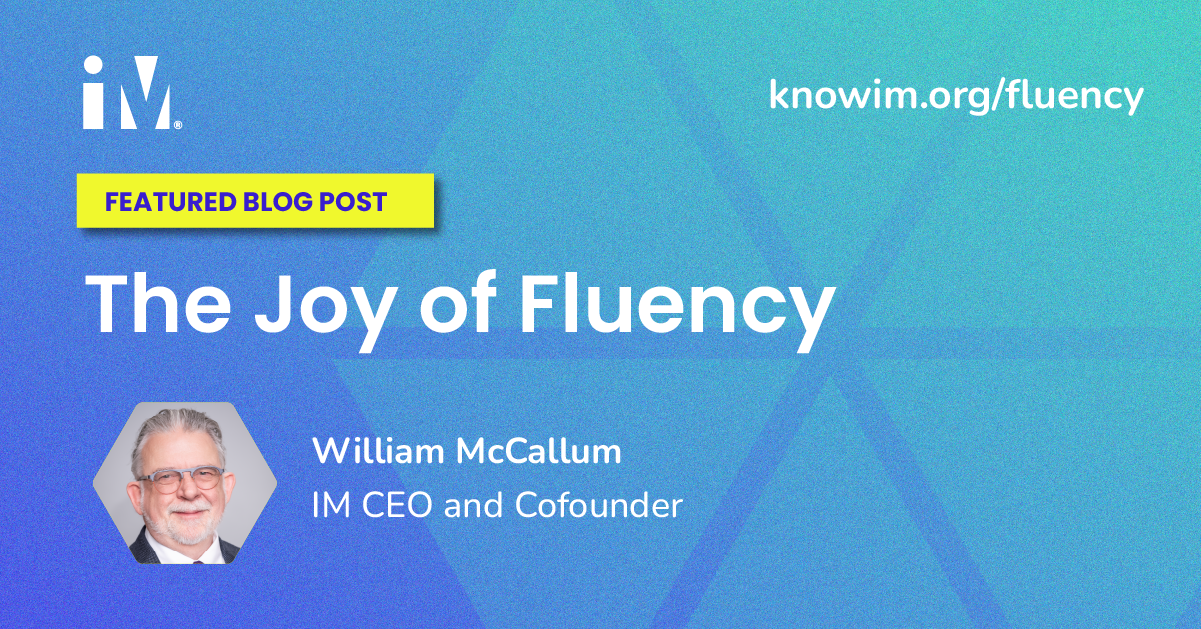By William McCallum
I’m not a very good skier, but I have once or twice in my life experienced the joy of a perfect run: gliding down the slopes, taking each turn with confidence. And I’ve had terrible runs where I struggled up a slope to find a detached ski, getting colder and wetter and wondering how I was ever going to make it. When I think about fluency in IM® K–5 Math, I see both the struggle, which is real for students, and the joy that comes from deft and confident exercise of skill mastered.
What is fluency in mathematics? The National Academies publication Adding It Up defines fluency as “skill in carrying out procedures flexibly, accurately, efficiently, and appropriately.” All those adverbs are important, but people in mathematics education tend to gravitate toward their favorites, with some preferring to emphasize accuracy and efficiency—with worksheets and timed tests, for example—while others care more about flexibility and appropriateness, engaging students in sharing different strategies and discussing them.
But in fact, all four aspects of fluency support one another. To experience the pure joy of that perfect ski run you need both the muscles and reflexes to enable you to execute the turns, and the strategy and judgment to plot your path down the hill.
Consider, for example, how a student might come to be fluent in single-digit addition facts, which they are required to know from memory by the end of grade 2. Take the fact 9 + 5 = 14. Students might start out understanding this as a process of decomposing the 5 into 1 + 4 and then combining the 1 with the 9 to make a 10, so 9 + 5 = 9 + 1 + 4 = 10 + 4 = 14. They might use counters or 10-frames to model this process. That’s not particularly efficient, but it could improve accuracy by providing a robust mental model for the sum—a model which, over time, can dispense with the counters and 10-frames to become a rapid sequence of events in the brain, so that eventually they achieve efficiency in addition to accuracy.
Of course, we could just have students memorize their addition facts, using flash cards, for example. That’s fine if it works. But memory can be notoriously inaccurate; it helps to have it backed by understanding.
Furthermore, this way of seeing 9 + 5 = 14 can be applied flexibly to many other calculations. If I see the fact in the way described above, then I also have a way of seeing 9 + 6 = 15, 9 + 7 = 16, and so on. And I have a way of seeing 19 + 5 = 24, 9 + 35 = 44, 29 + 35 = 64. Indeed, the point of having students know their single addition facts from memory is that this small set of facts, combined with the wonderful properties of the base 10 system, is the key to being able to do any addition problem.
What about appropriateness? Can a method that is efficient and accurate be at the same time inappropriate for a given context? An example might be the subtraction 134 – 98, where it would be inappropriate to use the standard algorithm rather than just see that 134 – 100 = 34 and 98 is 2 less than 100, so that the answer is 34 + 2 = 36. A student with the flexibility to see that will get the answer more efficiently and is less likely to make a mistake.
On the other hand, strategies like this are not always available, and fluency with the standard algorithm means that students don’t have to be forever on the lookout for them. For example, if a student sees 0.25 x 0.04 on an assessment, they could use a strategy such as taking ¼ of 0.04. But if they don’t see that or are uncertain about it, the standard algorithm is a perfectly good way to go and a safe bet. (Thanks to Jenna Laib for this example from her classroom, where students did indeed pursue both strategies, among others.)
In the IM K–5 curriculum, the development of fluency is embedded throughout the lessons, rather than isolated as a separate skill. This allows us to develop flexibility and judgement about the appropriate method in parallel with developing efficiency and accuracy; it also makes the development of the latter easier, because of the synergies I have described above.
There is joy to be had in the confident execution of skills with a purpose, and our aim at Illustrative Mathematics is to support teachers in helping students discover that joy.
Kilpatrick, J., Swafford, J., & Findell, B., editors (2001). Adding It Up: Helping Children Learn Mathematics. National Academy Press.
Next Steps/Call to Action:
In addition to this post, teachers may also enjoy:
